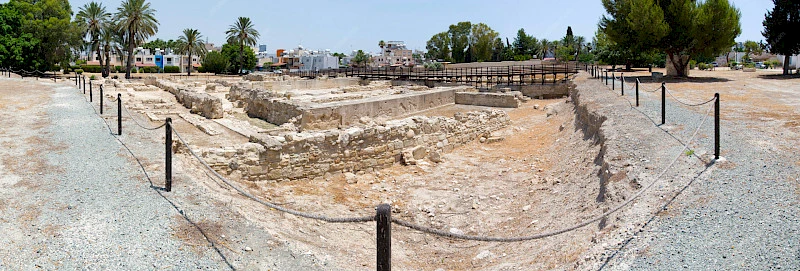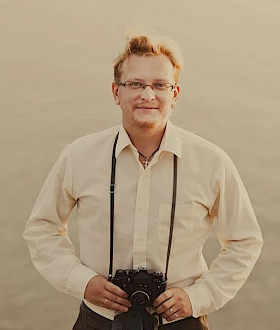Kition — One of the Oldest Cities in Cyprus
While strolling along the promenade in Larnaca, you may not realize that this resort is built on the foundation of one of the oldest cities in the world.
Kition was an ancient Greek city on the southern coast of Cyprus, in what is now Larnaca, and one of the ten city-kingdoms of Cyprus.

General Information about Kition in Cyprus
In antiquity, Kition was renowned for its harbor, which exported many agricultural products to the Eastern Mediterranean, Egypt, and the Aegean Sea. The city’s strategic location also made it an exceptional naval base. Particularly fascinating are the ship drawings carved into the walls of buildings in the ancient port.
Its most famous resident was Zeno of Kition, founder of the Stoic school of philosophy, which he taught in Athens around 300 BCE.
The city’s name derives from Phoenician and was borrowed into Ancient Greek as Kition and later into Latin as Citium.
This site was among the first excavated by the Cyprus Department of Antiquities after the island gained independence from British rule in the early 1960s.
History of the Ancient City of Kition
During the Late Bronze Age, Mycenaean Greeks settled here to exploit local copper deposits. This settlement was destroyed around 1200 BCE but was soon rebuilt on a larger scale.
By 1000 BCE, the religious part of the city was abandoned, although life apparently continued in other areas, as evidenced by tomb finds.
Literary sources suggest an early Phoenician presence in Kition. Some Phoenician merchants from Tyre colonized the area, extending Kition’s political influence. Many of the city’s sanctuaries were rebuilt and reused by Phoenician settlers.
From 570 to 545 BCE, the kingdom was under Egyptian control. Persia ruled Cyprus starting in 545 BCE. The city’s kings are named in Phoenician texts and coin inscriptions from 500 BCE onwards.
During the Classical Greek period, Kition was one of the leading local powers alongside nearby Salamis, which today is in the TRNC and also featured in one of our articles.
In 499 BCE, Cypriot kingdoms, including Kition, joined the Ionian Revolt against Persia, which ended Persian rule in Cyprus by 332 BCE.
Ptolemy I conquered Cyprus in 312 BCE, killed Pumiathon, the Phoenician king of Kition, and burned the temples. However, trade and life in the city continued.
Cyprus was annexed by the Roman Empire in 58 BCE. Numerous accounts indicate that the city flourished during Roman times. Under Emperor Septimius Severus, a curator was sent from Rome to manage Kition’s finances and trade.
The city was destroyed by consecutive earthquakes in 322 and 342 CE, which also devastated Salamis and Paphos.
Things to See
Most artifacts unearthed during excavations are housed in the British Museum in London. However, the picturesque ruins of this once-mighty and prosperous city are still worth exploring.
Some artifacts are displayed in pavilions near the excavation sites where they were discovered.
The most notable architectural remains include remnants of the Temple of Aphrodite-Astarte, built by the same Phoenician masons who constructed Solomon’s Temple in Jerusalem, both dating to the 9th century BCE.
Nearby, Egyptian-style temples from the 18th Egyptian Dynasty have been found, predating their Greek counterparts and serving Cyprus’s pre-Hellenic population.
Also preserved are tomb remnants from various periods and fragments of facilities for copper production—Cyprus’s most famous natural resource.
Kition Operating Hours
Visiting hours vary between winter and summer. On weekends and official Cyprus holidays, the complex is closed.
- Winter hours (September 16 – April 15): Monday – Friday: 08:30 – 16:00
- Summer hours (April 16 – September 15): Monday – Friday: 09:30 – 17:00
Entry Costs for Kition
As of late 2024, the entrance fee is €2.50. Seniors pay €1.25.
For organized groups of more than 10 people, the ticket price is reduced by 20%.
Additionally, the Department of Antiquities offers special entry passes for all museums and ancient monuments in Cyprus: one-day passes for €8.50, three-day passes for €17.00, and seven-day passes for €25.00.
- See also: how to save on museum tickets in Cyprus?
How to Get to Kition
The ruins are located within modern-day Larnaca, near the harbor. The ancient city was surrounded by massive walls, some of which can still be seen today.
By Car
You can find the site’s location on the map below, and here are the coordinates for navigation: 34.923056349442085, 33.63050997565214.
- You can rent a car using the Localrent aggregator, with options starting at €15 per day.
By Bus
You can also get there by bus—Larnaca’s bus station is a 15-minute walk from Kition. Here’s its location. Buses 407, 417, 418, 419, 420, 421, 422, 423, 424, 425, 428, and 429 serve this stop.
Follow our Instagram and Telegram—we share lots of useful and interesting information about Cyprus attractions!
